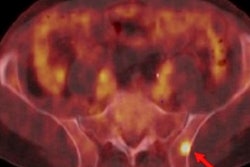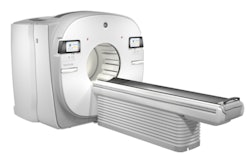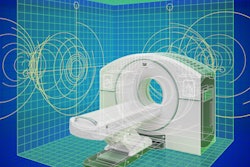
Is there a way to stem the declining numbers of residents pursuing specialties in nuclear medicine in Europe and the United States? In a study published on 19 March in the Journal of Nuclear Medicine, researchers sought insights from residents themselves that shed some light on how to fix nuclear medicine training.
For one, nuclear medicine residents generally have more affinity with scientific research than other radiology residents. Surprisingly, however, they were less frequently exposed to nuclear medicine education before residency than radiology residents in other subspecialties, such as cardiothoracic radiology, abdominal radiology, or interventional radiology.
"Such information may potentially be useful to increase recruitment of residents for the nuclear medicine subspecialty and to maintain the future nuclear medicine workforce," said Dr. Ton Velleman of the University of Groningen, the Netherlands, who led the study, which was presented at ECR 2021.
The Dutch integrated nuclear medicine and radiology training in 2015. At the time, they hoped the move would provide the best opportunities for optimal and comprehensive medical imaging, collaboration with clinical colleagues, and quality of patient care.
By 2019, however, the number of residents choosing nuclear medicine as a specialty had dropped from 50 to 14 trainees. Similar declines have been seen in many other countries in the past few years, including the United States.
"This number was considerably lower than anticipated and can be considered a threat for the future nuclear medicine workforce. Eventually, this may negatively affect patient care and the future development of the specialty," Velleman said.
To explore factors that influence a resident's choice for the nuclear medicine subspecialty, the researchers developed a web questionnaire and distributed it among all integrated nuclear medicine and radiology training hospitals in the country. Out of 350 total residents, 114 respondents were included in the analysis.
Results revealed that 42 of the residents indicated favorable conditions for pursuing nuclear medicine, which the researchers grouped into four categories:
- Expertise of nuclear medicine physicians and their quality of supervision in the training hospital
- Opportunities to do scientific research during and after residency
- Diversity of pathology, radiotracers, examinations, and therapies in the training hospital
- The expectation that the role of hybrid imaging will increase in the future
When asked their opinion on the integration of nuclear medicine and radiology training, one respondent said: "This is a good development in my opinion, since they are both imaging specialties and in the upcoming future overlap in both specialties will increase (for instance with PET/MRI)."
The expectation that hybrid imaging will increase in the future was one of the reasons why a Dutch national taskforce decided to implement an integrated nuclear medicine and radiology residency program in the first place, the authors noted.
On the other hand, 25 of the residents indicated unfavorable conditions for pursuing nuclear medicine, which the authors also grouped into four categories:
- Lack of collaboration and integration between nuclear medicine and radiology in some training hospitals
- Imbalance between nuclear medicine and radiology during the first two and a half years of basic training during residency, at the expense of nuclear medicine
- Uncertainty regarding the international recognition of the nuclear medicine subspecialty training
- Uncertain future of nuclear medicine regarding the chances of employment and the ratio of work activities of nuclear medicine to radiology
One respondent called the collaboration between nuclear medicine and radiology training programs "mediocre," and added, "Some of the old [nuclear medicine] staff is not positive about the new integrated program."
"An important reason to not choose the [nuclear medicine] subspecialty is the unclear future," said another respondent. "It feels like a waste to be deployed solely in [nuclear medicine] and not being able to do any acute or other [radiology] tasks. Choosing a [radiology] subspecialty with [nuclear medicine] expertise in the same field would better prepare me for the future."
Ultimately, the results of the study should be considered a snapshot in time, the researchers stated. Future developments such as adjustments to the Dutch integrated nuclear medicine and radiology curriculum and scientific developments in either nuclear medicine or radiology that lead to clinical paradigm shifts may lead to new insights.
"Nevertheless, our results provide a baseline framework that can be useful to all stakeholders who wish to increase the recruitment of nuclear medicine subspecialty residents," they concluded.



















